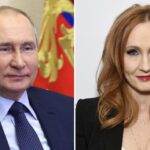Three days into his war with Ukraine, Russian President Vladimir Putin announced he was putting nuclear deterrent forces on “high alert,” which U.S. Secretary of State Antony Blinken called “the height of irresponsibility.” More recently, the Kremlin’s chief spokesman refused to rule out the possibility that Russia would use nuclear weapons against what it claimed was an “existential threat.”
Some experts have argued that the Russian president may consider using tactical, or nonstrategic, nuclear weapons. Here’s a rundown on what they are.
What are tactical nuclear weapons?
A tactical nuclear weapon is one that is smaller in design and would be used within short distances. It would typically be deployed to strike specific targets such as facilities or soldiers on a battlefield, rather than a larger surface area. These weapons can be launched on the same missiles that are now used to bombard Ukrainian cities. According to Scientific American, Russia is believed to possess about 2,000 tactical nuclear weapons that are kept in facilities across the country. This means the weapons are not ready to be deployed.
These are different from strategic nuclear weapons, which are also held by the superpowers. Both the U.S. and Russia are capable of striking each other from a large distance using these weapons. As of February, it’s believed Russia had some 1,588 strategic warheads.
Why do tactical nuclear weapons exist?
A simple answer is that nuclear superpowers know that if they use their more powerful, strategic weapons, it is nuclear annihilation for the world. By making these smaller weapons, it would be possible for countries to use them and avoid a nuclear wipeout. Former Secretary of Defense James Mattis, however, said in 2018 that he did not think “there is any such thing as a ‘tactical nuclear weapon.’ Any nuclear weapon used any time is a strategic game changer.”
How powerful are they?
There is no typical tactical weapon — they vary in power. Modern weapons have yields of 1 or up to 10 kilotons (a unit of explosive power equivalent to 1,000 tons of TNT). For comparison, the strategic nuclear bomb used on Hiroshima during World War II, which killed 140,000 people, was 15 kilotons. The bomb that followed three days later, destroying the city of Nagasaki, yielded 21 kilotons and killed 70,000 people. According to the BBC, Russia’s largest strategic weapons are believed to be over 53 times more powerful than the Hiroshima bomb, at 800 kilotons. A tactical weapon would “cause all the horrors of Hiroshima, albeit on a smaller scale,” Scientific American reports.
Is Putin allowed by Russian law to use tactical nuclear weapons?
According to Russia’s military doctrine, the former Soviet empire “shall reserve the right to use nuclear weapons in response to the use of nuclear and other types of weapons of mass destruction against it and/or its allies, as well as in the event of aggression against the Russian Federation with the use of conventional weapons when the very existence of the state is in jeopardy.”
The U.S. has warned that the doctrine, signed by Putin in 2014, sees an “escalate to deescalate” option of using nuclear weapons to force Russia’s enemies to back down in battles where the country faces defeat.
Why would Putin use them against Ukraine?
March 24 marked one month since Russia invaded Ukraine, and experts believe Putin hoped to take the country as quickly as he did Crimea in 2014 when he annexed the region. As the days add up, it is believed that as Putin finds himself backed into a corner, he could turn to nuclear weapons. A strike using tactical weapons could be used to wipe out Ukraine’s army and break its resistance.
In February, Putin told members of the press that if Ukraine were to join NATO, it would push Russia to use nuclear weapons. “There will be no winners” if Ukraine were to try to take back Crimea, he said.
Speaking to Agence France-Presse, Pavel Luzin, an expert at the Russia-focused think tank Riddle, said Putin’s first use of a tactical nuclear weapon would not be on a major city but rather at sea or in a remote, uninhabited region of Ukraine. This would be a maneuver to intimidate Ukrainian President Volodymyr Zelensky into surrendering. “After that, if the adversary still wants to fight, it may be used against the adversary in the direct way,” Luzin said.




